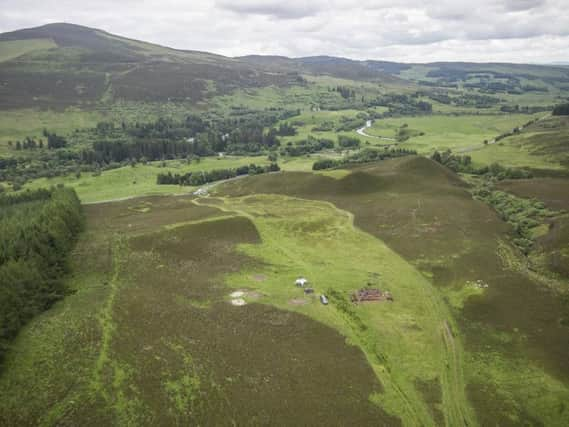The Picts: How a lost settlement in the hills has shed new light on their everyday lives


Results of a five-year project that examined the remains of three turf, timber and thatch Pitcarmick longhouses at Lair in Glen Shee have been published.
They reveal that the uplands were home to a settled and prosperous farming community from the late 6th Century to the mid- 9th Century.
Advertisement
Hide AdAdvertisement
Hide AdDavid Strachan, director of the Perth and Kinross Heritage Trust which led the project, said that the study gave fresh insight into the ordinary Pict.
"What we have got here is a picture of the every day, of the upland farmers and how they lived. That is really what is so fascinating.
"I think we have certainly shone a lamp on the everyday lives on the day-to-day lives of the Picts and we are beginning to get a new picture of the Picts as a stratified society."
The Picts emerged during the time of Roman rule of Britain but whose language, culture and identity disappeared after 500 years. They were the last major ethnic identity to become extinct in Britain
Mr Strachan said the site at Lair was so valuable as it had not been destroyed or altered by agricultural ploughing in the 1800s with it likely that the remains of similar other longhouses had been wrecked by industrial farming.
"These longhouses are similar to the blackhouses found until relatively recently in the Western Isles. The remarkable thing is that the ones at Glen Shee date to before the Viking Raids," he added.
At Glen Shee, evidence has emerged of Picts growing rye, barley and wheat or oats with a large number of cattle, and some sheep, also kept.
Crucially, it is believed the three houses were byre houses, which were split into a large enclosure for wintering cattle with a smaller living area for the farmers.
Advertisement
Hide AdAdvertisement
Hide Ad"It was speculated for a long time that, because these longhouses were so high up in what we would consider to be marginal lands, that these were low status people living on the fringes of a viable landscape or that they were living there on a seasonal basis, in a kind of shieling-type structure.
"We know now that this was a permanent settlement. These people were successful and prosperous. They were not at the edge of society.
"We found a type of early padlock at the site. Clearly these people had possessions and wanted to protect them, they wanted to lock them up."
Evidence of metal working was also found at the Lair site, with an engraved spinning whorl, usually associated with women and textile making, was also recovered. Traces of what is believed to be lanolin from sheep wool were found on the object.
An extremely rare green glass bead was also collected from the site.
Mr Strachan said that changes in the climate had made it possible for farmers to return to the uplands during this period.
"Even a slight variant of one or two degrees make the uplands open to settlement once again," he added.
Mr Strachan said the project complimented ongoing work at a hillfort near Dunkeld, which appears to have been a Pictish-era power centre.
Advertisement
Hide AdAdvertisement
Hide AdMr Strachan hailed the success of the Glen Shee project which had been underpinned by the work of volunteers from primary age children to older adults with support from archaeology students from all over Scotland.
He said that 66 volunteers contributed over 900 days of volunteering to the project - or around 6,000 hours.
"For a long time archaeology was carried out by volunteers and local societies but for the last 20 years or so it has become professionalised into the planning process. Usually there are research projects that end up in journals that the public are never told about.
"Our position is that we want to put people right back at the centre of it all."
He said there was now an appetite locally to reconstruct one of the longhouses.